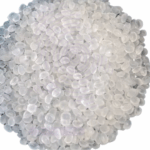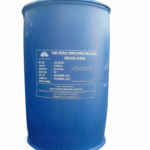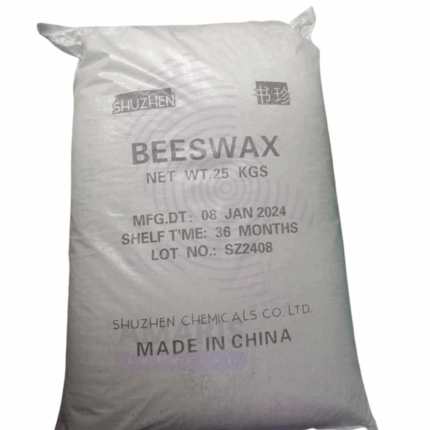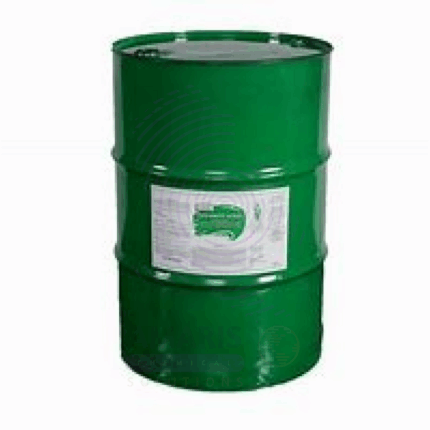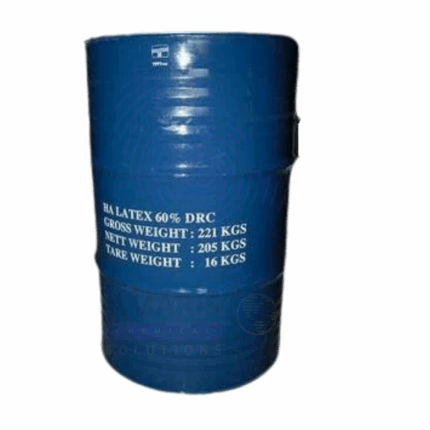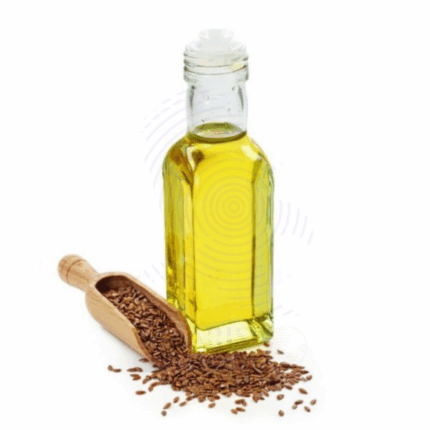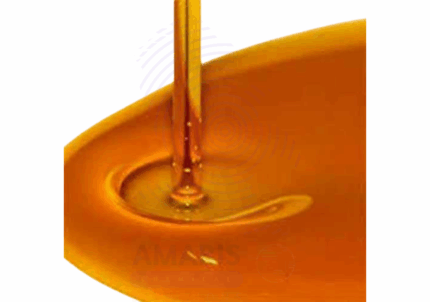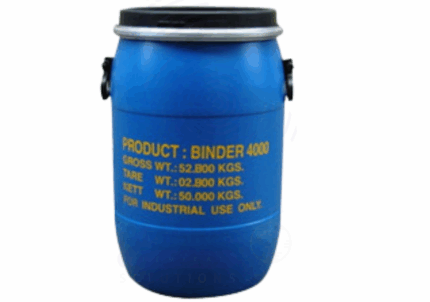Eagle Styrene Acrylic 72/ 50
Whatsapp Order
Eagle Styrene Acrylic 72/ 50 is a co-polymer emulsion consisting of styrene and acrylic monomers, offered at 50% active solids concentration in water. It appears as a milky-white, low-viscosity liquid with a mild odor. This polymer emulsion combines excellent film-forming properties, adhesion, and mechanical strength, making it widely used in coatings, adhesives, sealants, and functional binders across multiple industries.
Description
Table of Contents
Toggle
Eagle Styrene Acrylic 72/ 50
Primary Uses
- Paints & Coatings
- Serves as a primary binder in interior and exterior water-based paints, delivering excellent film formation, hardness, and scrub resistance.
- Improves adhesion to various substrates like drywall, metal, and wood.
- Enhances flexibility to resist cracking and chalking under environmental stress.
- Construction & Building Materials
- Used in acrylic latex caulks, sealants, and joint compounds for excellent seal integrity and flexibility.
- Acts as a binder in cementitious tile adhesives, masonry coatings, and patching compounds.
- Improves water resistance, adhesion, and workability of cement renders and stucco finishes.
- Adhesives & Binders
- Incorporated into pressure-sensitive adhesives, enhancing peel and tack strength.
- Used in hot-melt and cold-water adhesives for bonding paper, board, textiles, and laminates.
- Employed in nonwoven fabric lamination as a binder to control stiffness and handle time.
- Paper & Packaging
- Serves as a binder in coatings that provide gloss, printability, and water resistance to paper and board.
- Used in packaging adhesives for corrugated board lamination and box sealing.
- Textiles & Fibers
- Acts as a finishing aid for textile treatments to improve hand feel and dimensional stability.
- Used in impregnation formulations for fabric reinforcement and coating.
- Woodworking & Veneer
- Used as a wood primer or sealer, improving adhesion of paints and varnishes.
- Employed in laminating adhesives for plywood and particleboard products.
Secondary Uses
- Industrial & Decorative Flooring
- Used as binder in decorative concrete overlays and thin-set floor toppings.
- Serves in maintenance coatings for concrete and sports surfaces.
- Arts & Crafts
- Available as a binder in art gesso, craft glues, and decorative coatings.
- Automotive & Transportation
- Incorporated in flexible coatings and primers for metal and composite parts.
- Serves in interior coatings and adhesives for trim and upholstery.
KEY PRODUCT FEATURES
1. Basic Identification Attributes
- Product Name: Eagle Styrene Acrylic 72/50
- Active Content: 50% solids in aqueous emulsion
- Styrene/Acrylic Ratio: Approximately 72/28 by weight
- Appearance: Milky-white liquid emulsion
- Odor: Mild acrylic/styrene aroma
- pH (as supplied): Typically 3.5–5.0
- Viscosity: Low — 100–500 cP (Brookfield, spindle 2/20 rpm)
- Particle Size: ~150–300 nm (typical styrene–acrylic latex)
2. Physical & Chemical Properties
- Film Appearance: Clear, glossy to matte depending on formulation
- Adhesion: Excellent on porous substrates, metals, and painted surfaces
- Flexibility: Good — resists cracking across wide temperature ranges
- Water Resistance: Fair; improves upon mild crosslinking or coalescent use
- Chemical Resistance: Moderate; resistant to dilute acids and alkalis, weak solvents
- Stability: Stable if stored properly; can be affected by freezing or bacterial growth
3. Safety & Hazard Attributes
- Hazard Class (GHS): Non-hazardous as supplied (aqueous emulsion)
- Toxicity: Low; not classified as a health hazard in standard aqueous form
- VOC Content: Typically <50 g/L as per 50% solids basis
- Flammability: Non-flammable liquid
4. Storage & Handling Attributes
- Storage Conditions: Store between 5–38 °C; avoid frost and freezing
- Container Type: Plastic drums, IBC totes, or lined steel containers
- Shelf Life: 6–12 months from manufacture date when stored correctly
- Handling Precautions: Use PPE to avoid splashes; ensure good ventilation
- Avoid Contamination: Keep containers sealed between uses; add biocide if long retention
5. Regulatory & Compliance Attributes
- Complies with major paint and adhesive regulations (incl. TSCA, REACH)
- VOC levels suitable for low-VOC/GreenSeal, LEED-type, and regional Paint VOC regulations
- Non-toxic and safe for interior-building applications when fully dried
6. Environmental & Health Impact
- Ecotoxicity: Low to moderate; avoid direct discharge to water bodies
- Biodegradability: Partial biodegradability of polymer components
- Bioaccumulation: Not expected
- Mutagenicity/Carcinogenicity: Not classified
SAFETY HANDLING PRECAUTIONS
Safety Handling Precautions
PPE Required:
- Gloves (nitrile or PVC)
- Safety goggles or face shield
- Protective clothing if contact is possible during bulk handling
Handling Guidelines:
- Prevent aerosol formation; avoid inhalation of spray mists
- Clean spills with absorbent material, dispose per local regulations
- Maintain container hygiene to avoid microbial contamination
Storage Measures:
- Keep sealed and stored away from freezing; gently roll before drawing to re-distribute solids
- Use FIFO system to avoid age-related gel formation
- Avoid contact with oxidizing agents
Hygiene Practices:
- Wash hands after handling
- Do not eat, drink, or smoke during use
- Clean splash areas to prevent slips or accidental contact
First Aid Measures
- Inhalation: Move to fresh air; seek medical attention if respiratory distress occurs
- Skin Contact: Rinse with water; wash with soap if prolonged exposure
- Eye Contact: Flush eyes with water for at least 15 minutes; seek medical care if irritation persists
- Ingestion: Rinse mouth; drink water; seek medical help if large amounts ingested
Firefighting Measures
- Fire Hazards: Not flammable; water-based emulsion
- Extinguishing Media: Use water spray, foam, dry chemical, or CO₂ based on surrounding fire
- Special Precautions: Wear full firefighting PPE and SCBA
- Decomposition Products: May release CO, CO₂, low-level volatile organic compounds at high heat
Related products
Beeswax
Beeswax is a natural wax produced by honeybees of the genus Apis. It is secreted by worker bees from specialized glands and used to build honeycomb cells. Beeswax is a complex mixture of esters, fatty acids, and hydrocarbons, characterized by a pale yellow to brown color, a pleasant honey-like aroma, and a firm yet pliable texture. It has excellent emulsifying, binding, and protective properties, making it widely used in cosmetics, pharmaceuticals, food, and industrial applications. Beeswax is prized for its natural origin, biodegradability, and skin-friendly characteristics.
Clear Emulsion
Clear Emulsion is a transparent or translucent mixture of two immiscible liquids—typically oil and water—stabilized by emulsifying agents to form a stable, homogenous system. This product is widely used in cosmetics and personal care, pharmaceuticals, and specialty industrial applications due to its lightweight texture, ease of absorption, and aesthetic appeal. Clear emulsions offer a visually appealing, non-greasy feel with the advantages of both oil and water phases, delivering moisturizing, protective, and active ingredient-carrying benefits. Their clarity distinguishes them from traditional creamy emulsions, making them popular in modern skincare and cosmetic formulations.
Eagle Vam Veo( VV50/55)
Eagle VAM VEO VV50/55 is a water-based vinyl‑acetate–ethylene (VAM‑VEO) copolymer emulsion, formulated at 55% active solids. It presents as a milky-white, medium-viscosity liquid with a mild emulsion odor. This copolymer combines excellent film formation, adhesion, flexibility, and toughness, tailored for use in coatings, adhesives, sealants, and functional binders across multiple industries.
Latex
Latex is a natural or synthetic colloidal dispersion of polymer microparticles in an aqueous medium. Natural latex is harvested from rubber trees (Hevea brasiliensis) and appears as a milky fluid rich in rubber particles suspended in water. Synthetic latexes are produced from various monomers such as styrene-butadiene or acrylics. Latex exhibits excellent elasticity, flexibility, and adhesive properties. It is widely used in manufacturing gloves, balloons, coatings, adhesives, paints, and various molded products. Its film-forming ability, water resistance, and durability make it a versatile material across industries.
Linseed Oil
$ 17.15
Linseed Oil, also known as flaxseed oil, is derived from the seeds of the flax plant (Linum usitatissimum). It is a pale yellow to amber oil with a mild, nutty aroma. Rich in omega-3 fatty acids and antioxidants, Linseed Oil is widely used in cosmetics, personal care, industrial applications, and traditional medicine. It is valued for its moisturizing, anti-inflammatory, and skin conditioning properties, as well as its drying qualities in paints and varnishes.
Long Oil
Long Oil refers to oils with a high content of unsaturated fatty acids, particularly linoleic and linolenic acids, commonly derived from drying oils such as linseed, soybean, or safflower oil. These oils have extended drying times and are used in various industrial applications where slow curing and flexible film formation are desired. Long oil is a key component in producing long oil alkyd resins, which are widely used in coatings, paints, varnishes, and printing inks due to their excellent adhesion, flexibility, and durability.
Medium Binder
Medium Binder is a versatile adhesive and binding agent formulated to enhance cohesion, strength, and durability in various industrial and construction applications. It improves the bonding properties between different materials, providing a reliable and consistent bond that resists environmental degradation. Medium Binder is suitable for use in composites, coatings, and concrete formulations, optimizing performance and structural integrity.
Penetrator Binder
Penetrator Binder is a high-performance binding agent designed to improve the adhesion and penetration of coatings, adhesives, and sealants into porous substrates. It enhances substrate wettability and strengthens the bond between the applied material and the surface, resulting in improved durability and performance. Penetrator Binder is commonly used in construction, wood treatment, and industrial coatings to ensure better material integration and resistance to environmental factors.


 Preservatives(food)
Preservatives(food) Flavor Enhancers
Flavor Enhancers Acidulants
Acidulants Sweeteners
Sweeteners Antioxidants
Antioxidants Colorants(food)
Colorants(food) Nutraceutical Ingredients (food)
Nutraceutical Ingredients (food) Nutrient Supplements
Nutrient Supplements Emulsifiers
Emulsifiers
 Collectors
Collectors Dust Suppressants
Dust Suppressants Explosives and Blasting Agents
Explosives and Blasting Agents Flocculants and Coagulants
Flocculants and Coagulants Frothers
Frothers Leaching Agents
Leaching Agents pH Modifiers
pH Modifiers Precious Metal Extraction Agents
Precious Metal Extraction Agents
 Antioxidants(plastic)
Antioxidants(plastic) Colorants (Pigments, Dyes)
Colorants (Pigments, Dyes) Fillers and Reinforcements
Fillers and Reinforcements Flame Retardants
Flame Retardants Monomers
Monomers Plasticizers
Plasticizers Polymerization Initiators
Polymerization Initiators Stabilizers (UV, Heat)
Stabilizers (UV, Heat)
 Antifoaming Agents
Antifoaming Agents Chelating Agents
Chelating Agents Coagulants and Flocculants
Coagulants and Flocculants Corrosion Inhibitors
Corrosion Inhibitors Disinfectants and Biocides
Disinfectants and Biocides Oxidizing Agents
Oxidizing Agents pH Adjusters
pH Adjusters Scale Inhibitors( water)
Scale Inhibitors( water)
 Antioxidants(cosmetic)
Antioxidants(cosmetic) Emollients
Emollients Fragrances and Essential Oils
Fragrances and Essential Oils Humectants
Humectants Preservatives
Preservatives Surfactants(cosmetic)
Surfactants(cosmetic) Thickeners
Thickeners UV Filters
UV Filters
 Fertilizers
Fertilizers Soil Conditioners
Soil Conditioners Plant Growth Regulators
Plant Growth Regulators Animal Feed Additives
Animal Feed Additives Biostimulants
Biostimulants Pesticides (Herbicides, Insecticides, Fungicides)
Pesticides (Herbicides, Insecticides, Fungicides)
 Active Pharmaceutical Ingredients (APIs)
Active Pharmaceutical Ingredients (APIs) Excipients
Excipients Solvents(pharmaceutical)
Solvents(pharmaceutical) Antibiotics
Antibiotics Antiseptics and Disinfectants
Antiseptics and Disinfectants Vaccine Adjuvants
Vaccine Adjuvants Nutraceutical Ingredients (pharmaceutical)
Nutraceutical Ingredients (pharmaceutical) Analgesics & Antipyretics
Analgesics & Antipyretics
 Analytical Reagents
Analytical Reagents Solvents(lab)
Solvents(lab) Chromatography Chemicals
Chromatography Chemicals Spectroscopy Reagents
Spectroscopy Reagents microbiology-and-cell-culture-reagents
microbiology-and-cell-culture-reagents Molecular Biology Reagents
Molecular Biology Reagents Biochemical Reagents
Biochemical Reagents Inorganic and Organic Standards
Inorganic and Organic Standards Laboratory Safety Chemicals
Laboratory Safety Chemicals Specialty Laboratory Chemicals(Special Laboratory Equipment)
Specialty Laboratory Chemicals(Special Laboratory Equipment)
 Demulsifiers
Demulsifiers Hydraulic Fracturing Fluids
Hydraulic Fracturing Fluids Scale Inhibitors(oil)
Scale Inhibitors(oil) Surfactants(oil)
Surfactants(oil) Drilling Fluids
Drilling Fluids
 Dyes and Pigments
Dyes and Pigments Bleaching Agents
Bleaching Agents Softening Agents
Softening Agents Finishing Agents
Finishing Agents Antistatic Agents
Antistatic Agents
 Admixtures
Admixtures Waterproofing Agents
Waterproofing Agents Sealants and Adhesives
Sealants and Adhesives Curing Compounds
Curing Compounds Concrete Repair Chemicals
Concrete Repair Chemicals Anti-Corrosion Coatings
Anti-Corrosion Coatings
 Surfactants(cleaning)
Surfactants(cleaning) Builders
Builders Enzymes
Enzymes Solvents (Cleaning)
Solvents (Cleaning) Fragrances
Fragrances
 Electronic Chemicals
Electronic Chemicals Catalysts
Catalysts Lubricants
Lubricants Photographic Chemicals
Photographic Chemicals Refrigerants
Refrigerants Automotive chemicals
Automotive chemicals Pyrotechnic Chemicals
Pyrotechnic Chemicals
 Biodegradable Surfactants
Biodegradable Surfactants Bio-based Solvents
Bio-based Solvents Renewable Polymers
Renewable Polymers Carbon Capture Chemicals
Carbon Capture Chemicals Wastewater Treatment Chemicals
Wastewater Treatment Chemicals
 Pigments
Pigments Solvents(paint)
Solvents(paint) Specialty Coatings
Specialty Coatings Binders/Resins
Binders/Resins Additives
Additives Driers
Driers Anti-Corrosion Agents
Anti-Corrosion Agents Functional Coatings
Functional Coatings Application-Specific Coatings
Application-Specific Coatings
 Fresh Herbs
Fresh Herbs Ground Spices
Ground Spices Whole Spices
Whole Spices Spice Blends
Spice Blends Dried Herbs
Dried Herbs
 Leavening Agents
Leavening Agents Dough Conditioners
Dough Conditioners Flour Treatments
Flour Treatments Fat Replacers
Fat Replacers Decoratives
Decoratives Preservatives(baking)
Preservatives(baking)
 Plasticizers & Softeners
Plasticizers & Softeners Reinforcing Agents
Reinforcing Agents Adhesion Promoters
Adhesion Promoters Vulcanizing Agents
Vulcanizing Agents Antidegradants
Antidegradants Blowing Agents
Blowing Agents Fillers & Extenders
Fillers & Extenders Accelerators & Retarders
Accelerators & Retarders
